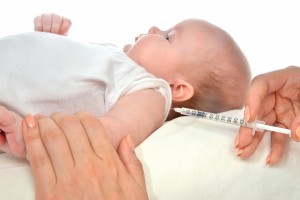In the October issue of the medical journal Pediatrics researchers published a study where 3,924 parents had been interviewed in a National Immunization Survey. 28% of the parents either delayed the vaccination because of concerns or refused vaccination of their child altogether. A multivariate analysis was performed that shed more light on this. There was a probability of about 2.35-fold (compared to parents who had no concerns) that one of the following factors was responsible for this: parents who would delay a vaccination had on average 2 or more children (4.3-fold more likely to delay than parents with one child) and unmarried mothers also were more likely to delay (probability 2.14-fold). Parents had a probability of 2.68-fold to refuse a vaccination when the child was 25 to 35 months old when compared to those with a child younger than this. The varicella vaccine, which is a live attenuated vaccine, was mostly the reason given when parents were unsure as to whether to give permission for vaccination or when they refused to give consent.
In contrast, reasons for delays of vaccination were that the child was ill and the vaccination was given at a later date when the child had recovered. The reason that parents decided not to delay or not to decline vaccination was that they discussed their concerns with the health care provider and they felt now informed and assured that vaccination was the right thing to do. The authors felt that the study emphasized how important it is to inform the parents of the science behind vaccinations.
Comments: The study did not review the fears of mercury poisoning with the preservative thimerosal, which is still contained in the vaccines of many countries and has been shown to be particularly devastating in autistic children and children with learning disabilities.
Pediatrics. 2008;122:718-725
Last updated December 18, 2014






